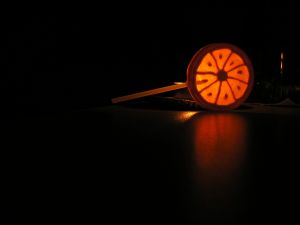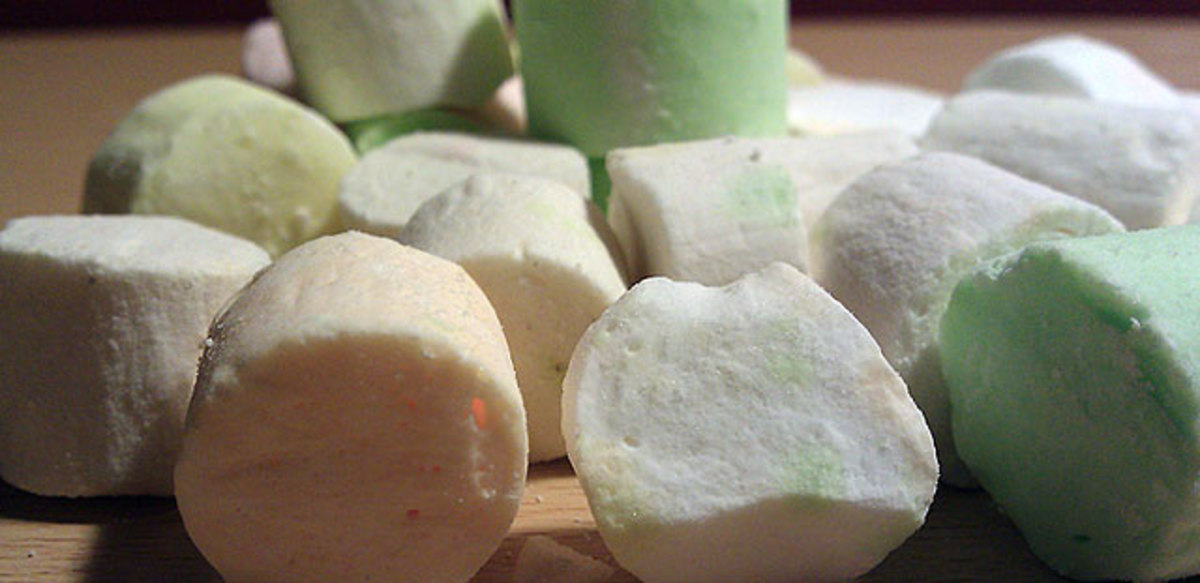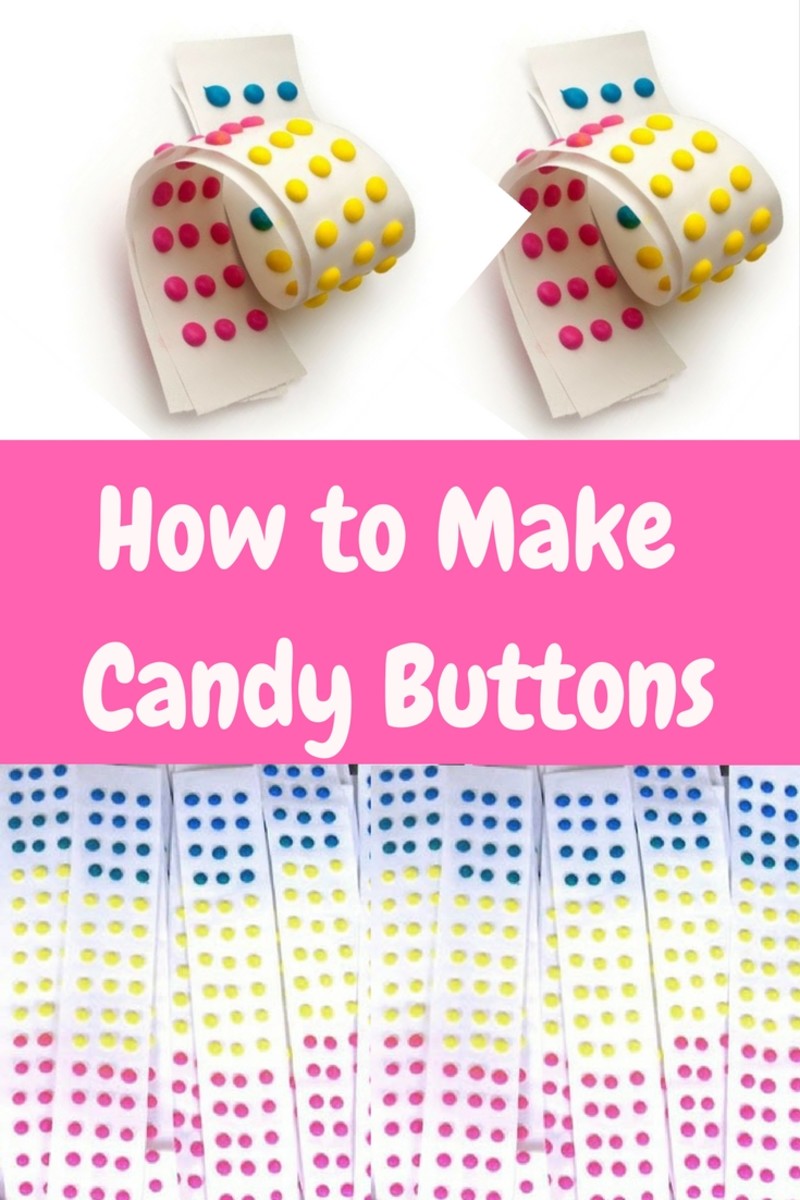Who Invented The Lollipop?

Unwrapping the Lollipop
If Food Network's Unwrapped with Marc Summers has not provided the history of the lollipop yet, it will probably do so in the future. It has presented the histories of numerous types of candies and other foods and the lollipop history is too to resist.
Dictionaries of many stripes tell is that in the late 1700s, the English word for tongue was "lolly" and a lollypop became a confection that was licked with the tongue. It is thought that street vendors during the lifetime of Charles Dickens first used the terminology in their hawking.
Andy Williams and The Chordettes in 1958
The first iteration of the "lollipop" was the ants-and-honey on a stick enjoyed by people and animals when the world was new.
Dum Dum Pop

Cave Pops
The first semblance of this product is the ants-and-honey on a stick enjoyed by people when the world was new. Folks still enjoy these treats in African nations and other countries around the world. At state and country fairs in the United States these days, the big game in town is to create as many different foods on a stick as possible!
Thus, our modern lollipop is related to anything eaten from a stick in antiquity. it is also related to anything eat from a string, because people did not always have sticks. When people began making dipped candles with cloth or twined material wicks, they also discovered that they could dip a string or the like into honey or sugar water and lick it. If they left the string in the sugar water, it hardened into rock candy. today, you can still make or purchase rock candy along, on a string, or on a swizzle stick for drinks.
Big Rock Candy Mountain, written 1920 by Harry McClintock
The Short Stick
All this aside, the lollipop is candy on a short stick, except in the case of the All Day Sucker, larger and on a longer,stronger stick to support it. In some English-speaking countries, they are still called, for short, "lollies" or "lollys"
Archaeologists have found lollipops in Arab nations, Chinese, and Egyptian regions that consisted of fruits, nuts, and honey. Sticks were likely used because the food was so sticky, but also awkward to eat from a bowl with a utensil (it all stuck together).
Sugar arrived in Europe as a luxury class item in the Middle Ages and candy made from it was a high expense. It was accessible to royalty and rich men. For this type of candy, sugar was boiled and made into blocks that hardened. Some were left loose, but many were speared by ornately designed anmd carved handle-sticks (just as in China, the wealthy had/have expensive ornate chop sticks).
My Boy Lollipop - written 1956
Wheels of Progress
Enter sugar beet juice and the Industrial Revolution.
A cheaper substitute for cane sugar and honey (both expensive) was extracted from sugar beets. With this advance, candy progressed from luxury to delicacy to everyday must-have treat.
Hard candy was the staple of the confection business, including horehound drops (made from a plant and used in cough syrups as well), lemon drops, peppermint drops, and all manner of drops and lozenges. Sticks were inserted in some of these form time to time, but not habitually. They were more often a lolly without a stick.
The 20th Century brought machines into candy making and made it quite simple to insert sticks into candies automatically. The mass-produced ticky-tacky lollipop had arrived.
Old Time Candy Company
Commander Checkov: "Russia invented the lollipop - and baseball."
Who invented them? -- Several people at once, probably -- It's time had come!
In 1905, the McAviney Candy Company boiled hard candies in vats and stirred them with sticks. The owner took home the coated sticks to his children to lick. In 1908, recognizing a marketing niche, he began to sell the "used candy sticks".
In the same year, 1908, the Racine Confectionery Machine Company, began to market the first automated lollipop machine. In 1912, Russian-born Samuel Born invented another machine for lollipops. For this, he won the keys to the City of San Francisco. He also invented candy sprinkles for the tops of sundaes and cakes. The sprinkles were simply leftover byproducts from candy making.
Since the 1904 World's Fair in Saint Louis is credited with showcasing new foods, a lollipop was likely marketed on the fairgrounds even then, alongside the new ice cream cone and perhaps the hot dog on a stick.
Good Ship Lollipop - written 1934
The Good Ship Lollipop: America
The lollipop is a leading candy seller in America and other parts of the world. In the 21st Century, the Spangler Candy Company is lauded and renowned for its Dum Dum Lollipops, Saf-T-Pops, Tootsie Pops and gimmick novelty pops - a total of at least 35 kinds that are big sellers. They are all very popular during holidays such as Easter, Christmas, and Halloween. In fact, long strips of pops in cellophane are used as Christmas tree decorations.
The Old Time Candy Company in Northern Ohio specializes in gathering and distributing every kind of lollipop still manufactured in America.
More Information about Candy
- Favorite Candy and Bread Recipes
Here are four delicious traditional Festival and Feast Day recipes that you may not know yet, for breads and candy. - How to Make Cheese Candy in Several Variations
I've experimented with several recipes on a Sunday afternoon and found that these are not so weird as recipes after all and are really very good. Some are no-cook and the basic recipes can be modified for a variety of different tastes and good fun. - Weird and Wacky Candy Recipes
Some tasty candy can be made from vegetables and even bacon. You may want to try some of these recipes.
© 2010 Patty Inglish MS





